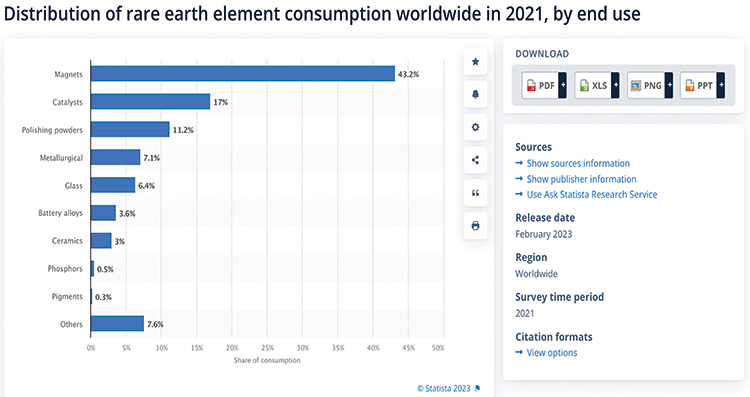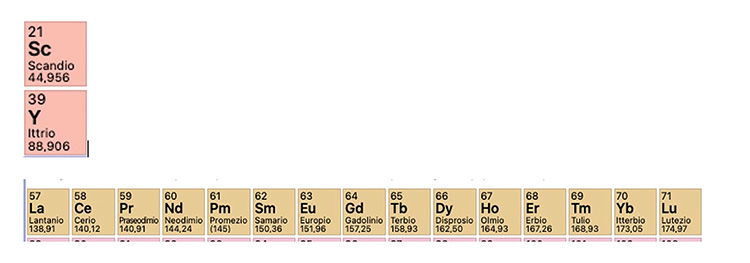Build a strategy you need to transform the WEEE you collect into a “gold mine” for your business.
By Samuele Barrili
According to Wikipedia, “An urban mine is the stockpile of rare metals in the discarded waste electrical and electronic equipment (WEEE) of a society. Urban mining is the process of recovering these rare metals through mechanical and chemical treatments. The name was coined in the 1980s by Professor Hideo Nanjyo of the Research Institute of Mineral Dressing and Metallurgy at Tohoku University and the idea has gained significant traction in Japan (and in other parts of Asia) in the 21st century. Research published by the Japanese government’s National Institute of Materials Science in 2010 estimated that there were 6,800 tonnes of gold recoverable from used electronic equipment in Japan.”
The definition goes directly to the point of extracting rare metals from electrical and electronic waste. However, what does that really mean, especially nowadays? First, let me tell you why you are really sitting on a gold mine. The global market scenario shared by Statista.com clearly says where the largest consumption is: magnets, as shown Figure 1.

However, to clarify, you should consider that magnets are used in all types of equipment—from your drilling tools up to the electrical engines of your new truck. That means that their consumption will only grow, which can create problems, such as what has happened in 2021 when the car market faced a delay in its delivery due to the scarcity of rare earth elements—platinum and gold.
Along with gold and platinum, rare earth elements (see Figure 2) are more precious for the electrical and electronic industry. These elements are so named from the minerals from which they were isolated that were rare oxide-type minerals. A smelting technique used in the 18th century classified them as earth since they are strongly basic water-insoluble oxides of electropositive metals unable to be melted into metal. Beyond the chemical classification, what is important is that these elements are now essential for the technologies running in your car, cell phone, television, PC, and more.

Source: Wikipedia, https://simple.wikipedia.org/wiki/Periodic_table.
Unfortunately, these elements are not available in their pure form in nature; they are found associated with other minerals in the earth’s crust and quantities ranging from a few grams to hundreds of grams per ton. From this, you can understand how much work is necessary to obtain 1 kg of pure material. To produce 1 ton of rare earth, 75 tons of acid waste and 1 ton of radioactive waste are produced—moving no less than 10,000 tons of material. This translates to incredible costs for companies that need these materials for production. Costs will continue to grow due to the low availability of these materials.
An Opportunity
This presents an opportunity for you and your waste company. If your company collects TVs, PCs, cars, cell phones, and more, you know that you may be sitting on a gold mine. Consider that for every ton of smartphones, you roughly get about 300 grams of gold versus the 30 grams from a ton of soil in the presence of a gold vein.
Let’s jump on transforming your waste company into an active gold mine. This means that by promoting your collection process towards your communities, you will have large quantities of secondary raw materials to resell. Here is where your marketing will need to emphasize the importance of the raw materials in the smartphone stored in the drawer or the old laptop abandoned in the garage. For example, you can create an agreement with a local phone and TV shop offering an incentive to bring old mobiles and old TVs to the shop to buy a new one. You can also create a similar process in the local schools giving something back to the community. There are multiple ways to do it.
At the same time, you will need to start “knocking on the doors” of potential buyers of these materials to build the resale market for secondary raw materials. Especially now that the EPR (Extended Producer Responsibility) is more prominent, I am sure that you will find more doors opened because producers are searching for partners to create circularity around their products.
Marketing as an Effective Tool
In this case, your marketing will be the most effective tool in communicating the supply chain advantage you can offer in addition to the services related to the product. In short, you have a huge
potential in front of you. It is up to you to seize it. | WA
Samuele Barrili is a Waste Management Expert and Business Strategist. Born in Cagliari, Italy, Samuele began his career as a salesman in 2010. After earning a degree in Toxicological Chemistry at the University of Cagliari (Sardinia) and many masters in Waste Treatment, he combined his knowledge to define his mission: save the planet helping 6,000 waste management companies to continue to thrive. After nine years in the field, working as a sales and marketing manager for international firms in waste management, Samuele created M4W Marketing For Waste, the first growth agency focused on helping waste management companies. Marketing4Waste is the first service dedicated to waste management companies. He can be reached at [email protected] or visit www.marketing4waste.com.
